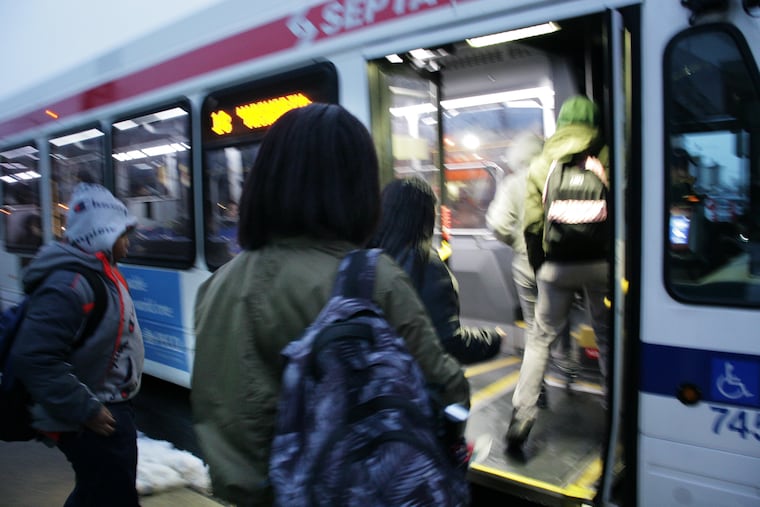SEPTA and Philly schools should focus on safe transportation for reopenings | Opinion
Reopening our schools comes with its own set of risks and stressors on SEPTA, where riders still don't feel safe during COVID.

SEPTA riders have recently given city officials feedback that should shape the city’s school reopening conversations this fall.
By and large, riders do not consider riding public transit safe during COVID, according to SEPTA’s July Travel Survey of over 2,700 riders in Philadelphia. As adults returned to work and ridership increased over the summer, SEPTA employees have struggled to enforce mask requirements and are at increased risk of exposure: There have now been over 350 confirmed SEPTA employee coronavirus cases.
So, what is going to happen when school buildings reopen and the many students who use public transit to get to and from school return to SEPTA? How will the city and the district work together to keep SEPTA riders, including students, safe during their commutes?
» READ MORE: SEPTA riders feel unsafe and say mask enforcement could be better, COVID-19 travel survey finds
The conversation about safely returning to school is focused on social distancing and masks in schools, cleaning protocols, and school building ventilation systems. But officials should also think about student commutes. When school buildings reopen, students who have been largely confined to their homes and neighborhoods as they attend school virtually will start moving more freely about the city, increasing the risk of COVID transmission even before they step foot inside.
The School District of Philadelphia will resume in-person classes November at the earliest, while some suburban districts like Lower Merion have already resumed some in-person learning.
In planning for safe reopening, SEPTA, the city, and SDP officials should carefully consider a report about school transit that Research for Action’s Philadelphia Education Research Consortium (PERC) and Baltimore Education Research Consortium, in collaboration with SDP, published in August.
We found that over half (60%) of School District high school students reported using SEPTA to get to school. The average high school student spends nearly an hour commuting to and from school, and nearly 3,500 spend over an hour and a half on public transit every day, including SEPTA bus, trolley, and subway routes.
When these students return to school buildings, we can expect a sudden increase in SEPTA ridership — and in potential risk of COVID transmission. Unsurprisingly, that risk is not equitably distributed. We found considerable variation in average commute time within and between schools: Students attending citywide and special admission schools, which draw students from across the city, and those living in City Council Districts 8, 9, and 10 tend to have longer estimated public transit commutes, with more transfers.
» READ MORE: Health experts say Philly-area schools could consider reopening this month based on coronavirus transmission rates
PERC has made available school-specific maps and statistics that district and school leaders, high school students, and their families can use to assess their commute-time related risks. For example, 74% of Dobbins Technical High School students took public transit to school in 2018, and 10% of them will spend 100 minutes or more commuting to and from school every day. That’s a long time to be confined in a small space with a revolving door of new passengers every few minutes.
As of June, all SEPTA passengers are required to wear a face mask or covering and must also follow social distancing and cleaning protocols. SEPTA’s Plan-Ahead Teams and newly unified Planning Division are working hard to respond and adapt. However, SEPTA’s revenue is projected to drop over $400 million over the next three years. Given this reality, SEPTA needs a robust plan to address COVID safety concerns as students return suddenly and en masse to school buildings.
» HELP US REPORT: Are you a health-care worker, medical provider, government worker, patient, frontline worker, or other expert? We want to hear from you.
Thus far, SEPTA has noted how school closures have impacted ridership. But reopening our schools comes with its own set of risks and stressors on the system. Before students return to school buildings, we hope to see comprehensive and thoughtful planning and adequate funding for implementation, with particular attention to equity concerns raised by our report.
Alyn Turner is the director of quantitative research at Research for Action and directs the Philadelphia Education Research Consortium.